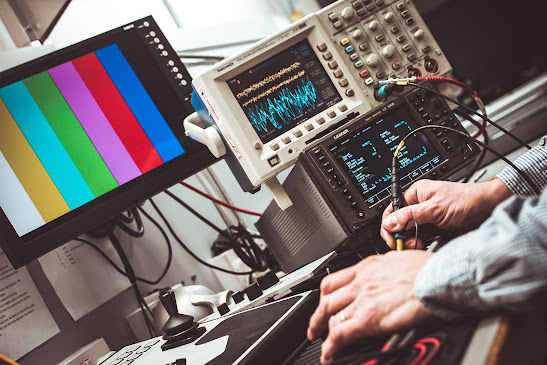Behind each steady improvement and technological advancement is a group of researchers and designers working diligently.
image: credit to Jonathan
It might seem like innovation has been pushed back many years, as though by enchantment. In any case, behind each steady improvement and technological advancement is a group of researchers and designers working diligently.
UC Santa Barbara Professor Ben Mazin(link is outer) is creating accurate call sensors for telescopes and observatories. In a paper distributed in Physical Review Letters(link is outer), he and his group worked on the spectra goal of their superconducting sensor, a significant stage in their definitive objective: examining the piece of exoplanets.
We had the option to generally twofold the unearthly settling force of our finders, "said the first creator," Nicholas Zobrist(link is outside), a doctoral understudy in the Mazin Lab.
This is the biggest energy goal increment we've at any point seen, added Mazin. It opens up an entirely different pathway to scientific objectives that we were unable to accomplish previously.
The Mazin Lab works with a kind of sensor called a MKID. Most light identifiers—like the CMOS sensor in a telephone camera—are semiconductors in view of silicon. These work by means of photographs of an electric impact: a photon strikes the sensor, knocking off an electron that can then be identified as a sign reasonable for handling by a microchip.
Electrons MKID utilizes a superconductor, in which power can stream with no obstruction. Notwithstanding zero opposition, these materials have other valuable properties. For example, semiconductors have volatile energy that should be defeated to take the electron out. The connected hole energy in a superconductor is multiple times less, so it can distinguish even weak signals.
Likewise, a solitary photon can knock numerous electrons off of a superconductor rather than just one in a semiconductor. By estimating the number of electrons, MKID photographs of volatile can really decide the energy (or frequency) of the approaching light. Furthermore, the energy of the photon, or its spectra, enlightens us a great deal concerning the material science of what discharged that photon, Manumberzin said.
Energy
With spitting energy
The scientists had hit a limit in regard to how delicate they could make these MKIDs. After much examination, they found that energy was spilling from the superconductor into the sapphire-precious stone wafer that the gadget is made on. Thus, the sign seemed more vulnerable than it really was.
In common hardware, current is conveyed by versatile electrons. Yet, these tend to cooperate with their environmental elements, dissipating and losing energy in what's known as obstruction. In a superconductor, two electrons will match up — one twisting up and one twisting down — and this Cooper pair, as it's called, can move about without obstruction.
It resembles a couple at a club. Mazin made sense of it. “You have two individuals who match up, and afterward they can move together through the group with practically no opposition. While a solitary individual stops to converse with everyone on route, they dial them back.
In a superconductor, every one of the electrons is brought together. They're all moving together, moving around without connecting with different couples, which is particularly on the grounds that they're at the MKID measures.
ll looking profoundly into one another's eyes.
"A photon raising a ruckus around town resembles somebody coming in and spilling a beverage on one of the accomplices," he proceeded. This splits the couple up, making one accomplice coincidentally find different couples and create an unsettling influence. This is the fountain of versatile electrons tha
Be that as it may, at times, this occurs at the edge of the dance floor. The insulted party staggers out of the club without thumping into any other individual. It was incredible until the end of the artists, but not for the researchers. On the off chance that this occurs in the MKID, the light sign will appear to be more vulnerable than it really was.
>>>>>>>;
Mazin, Zobrist and their co-creators found that a slim layer of the metal indium — put between the superconducting sensor and the substrate — radically decreased the energy spilling out of the sensor. The indium basically behaved like a wall around the dance floor, keeping the jarred artists in the room and connecting them with the remainder of the group.
They picked indium since it is likewise a superconductor at the temperatures at which the MKID will work, and nearby superconductors will more often than not collaborate on the off chance that they are slight. However, the metal introduced a test to the group. Indium is milder than lead, so it tends to cluster up. That is not perfect for making the slender, uniform layer the scientists require.
Be that as it may, their time and exertion paid off. The method cuts down the frequency estimation vulnerability from 10% to 5%, the review reports. For instance, photons with a frequency of 1,000 nanometers can now be estimated to an accuracy of 50 nm with this framework. "This has genuine ramifications for the science we can do," Mazin stated , "in light of the fact that we can more readily determine the spectra of the articles that we're checking out."
Various peculiarities transmit photons with explicit spectra (or frequencies), and various particles ingest photons of various frequencies. Using this light, researchers can utilize spectroscopy to distinguish the pieces of items both close by and across the whole noticeable universe.
>>>>>>>>;;
Mazin is especially keen on applying these indicators to exoplanet science. At present, researchers can do spectroscopy on a minuscule subset of exoplanets. The planet needs to pass between its star and Earth, and it should have a thick climate so that enough light goes through it for specialists to work with. In any case, the sign of commotion proportion is wretched, particularly for rough planets, Mazin said.
With better MKIDs, researchers can utilize light glistened off the outer layer of a planet as opposed to sending it through its restricted air alone. This will before long be conceivable with the capacities of the up-and-coming age of 30-meter telescopes.
The Mazin bunch is likewise exploring different avenues regarding something else altogether related to the energy-misfortune issue. Although the outcomes from this paper are noteworthy, Mazin said he accepts the indium method could be outdated in the event that his group is fruitful with this new undertaking. One way or the other, he added, the researchers are quickly achieving their objectives.
click here for best video software: https://pictory.ai?ref=







Comments
Post a Comment